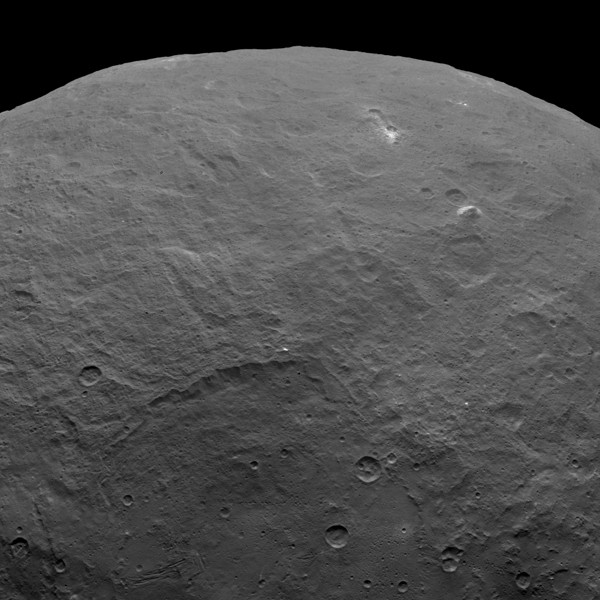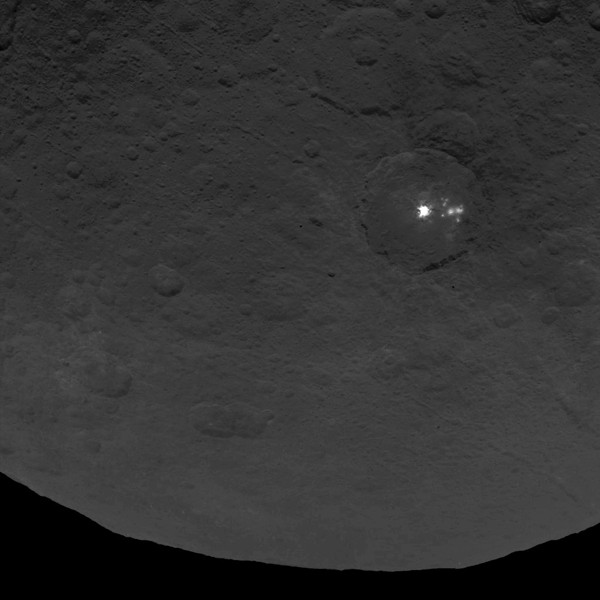NASA's Dawn spacecraft has transmitted back probably the best image of dwarf planet Ceres and its mysterious bright spots that are scattered on its surface. Many space enthusiasts also believe that this cluster of bright lights could reveal an alien civilization but scientists think it's ice or some reflective material.
This newest image of Ceres' bright spots consists of a cluster of eerie lights found inside a crater that spans 55 miles. The clusters are separated in several patches where some of them are not visible in the other images. Scientists are still baffled as to what the origin of these spots are and how they came to be.
NASA officials revealed on Monday that eight spots can be seen huddled in the largest and brightest spot region that is estimated to be six miles wide. Scientists still say that these spots are produced by highly reflective material such as ice and salt but they are also considering other possible sources as well.
This latest photo was captured last June 9 within a distance of 2,700 miles which is the altitude maintained during the second mapping of the dwarf planet. Apart from the mysterious and highly controversial bright spots, Ceres also presents a set of new features that are just as intriguing with this new set of photos.
One of these bizarre geological features of Ceres includes a mountain rising about three miles high from the cratered surface where scientists dub this as the "pyramid".
According to Dawn mission principal investigator Carol Raymond from the Jet Propulsion Laboratory in California, Ceres possesses most interesting features that are truly unique. She says that there are icy moons in the outer solar system that have craters with pits in their centers but Ceres has more central pits inside its craters on its surface.
She adds that these features can offer pivotal clues about the inner structure and composition of Ceres that are not clearly visible to Dawn.
NASA's Dawn mission costs US $473 million which was launched in 2007 to explore Ceres and Vesta which are the two biggest planetesimals found in the asteroid belt between Mars and Jupiter. Dawn is also the first spacecraft to ever orbit a dwarf planet.




























